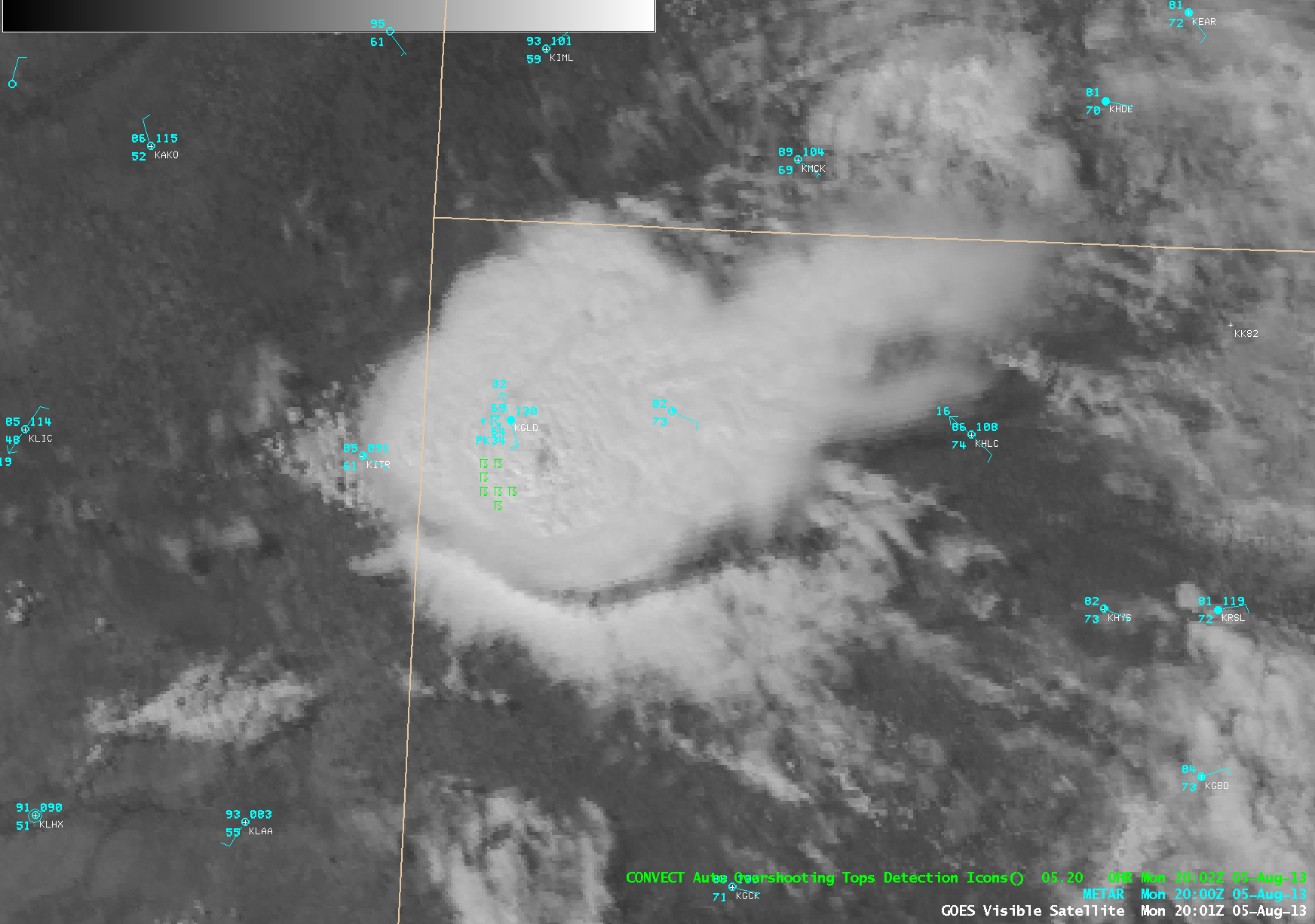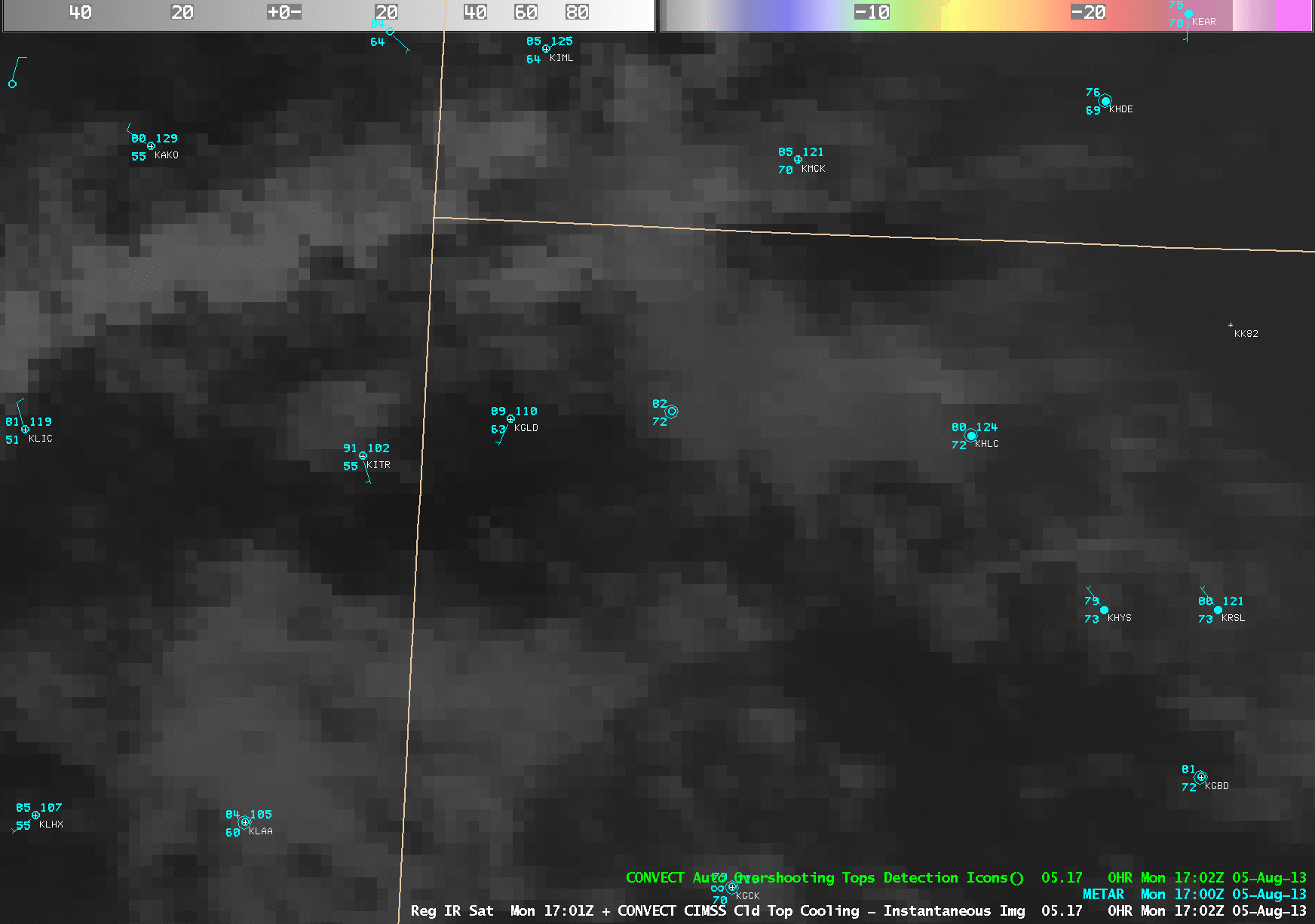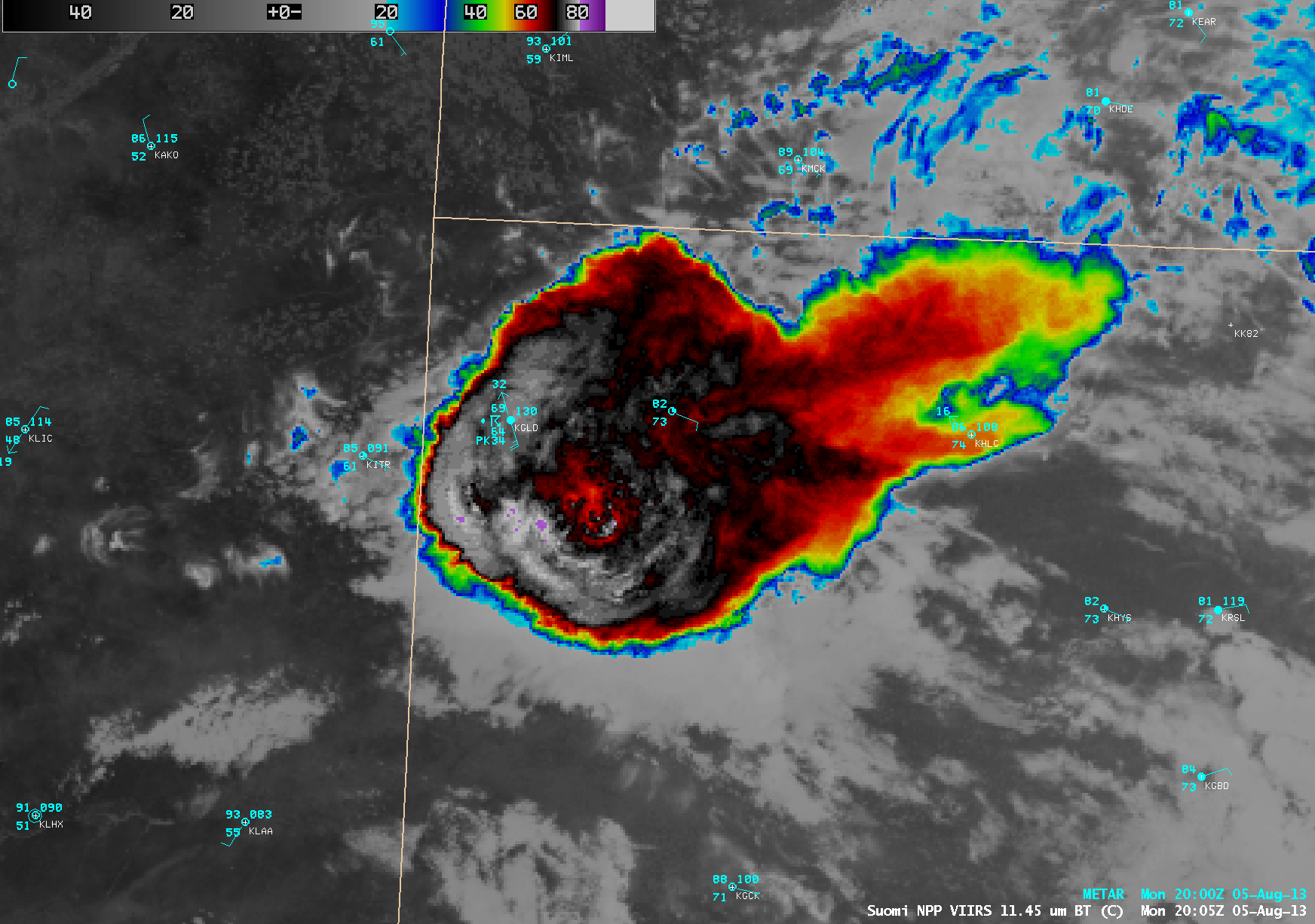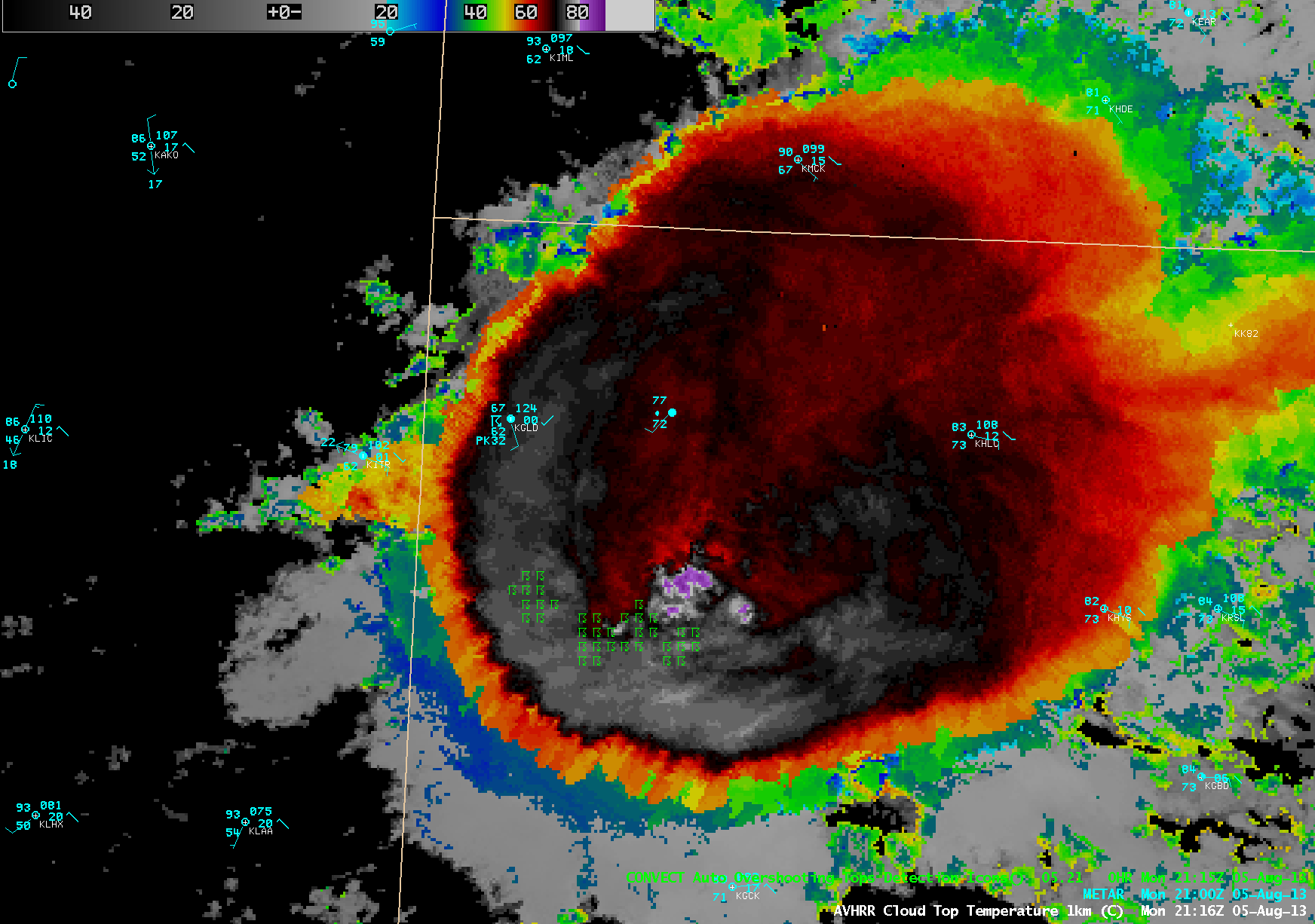Severe thunderstorms in northwestern Kansas

GOES-13 0.63 µm visible channel images with overshooting top detection icons (click image to play animation)
AWIPS images of 1-km resolution GOES-13 0.63 µm visible channel images with automated overshooting top detection icons (above; click image to play animation) showed the development of a large mesoscale convective system across northwestern Kansas during the afternoon hours on 05 August 2013. Note that the surface air temperature at Goodland, Kansas (KGLD) dropped from 91º F at 19 UTC to 69º F at 20 UTC (with southeasterly winds gusting to 34 knots).
4-km resolution GOES-13 10.7 µm IR channel images with automated overshooting top detection icons (below; click image to play animation) revealed the formation of a very broad and well-defined “enhanced-V” storm top signature, with cloud-top IR brightness temperatures becoming as cold as -80º C at 23:15 UTC. Overshooting top detection began after 19:45 UTC, once GOES-13 cloud-top IR brightness temperatures became -71º C or colder.

GOES-13 10.7 µm IR channel images with overshooting top detection icons (click image to play animation)
During the early stages of convective development, GOES-13 10.7 µm IR images combined with 15-minute cloud top cooling rates (below) showed the development of significant cloud top cooling rates along the Colorado/Kansas border area at 18:15 UTC (prior to the formation of weak, brief landspout tornadoes just northeast of Goodland, Kansas during the 18:28-18:40 UTC period) — a maximum cloud top cooling rate of 35.3º C in 15 minutes was detected at 18:45 UTC.
A comparison of 1-km resolution Soumi NPP VIIRS 11.45 µm IR channel and 4.-km resolution GOES-13 10.7 µm images (below) demonstrated the ability of higher spatial resolution VIIRS data to detect much colder IR brightness temperatures associated with the more vigorous overshooting tops (-82º C on VIIRS, vs -71º C on GOES). In addition, a northwestward GOES image parallax shift was seen, due to to the large viewing angle of the GOES-13 satellite positioned at 75º W longitude. Shortly after the time of these images, this storm produced hail of 1.0 inch in diameter at 20:11, 20:21, and 20:54 UTC (SPC storm reports)
Comparisons of 1-km resolution POES AVHRR Cloud Top Temperature and Cloud Top Height products at 20:21 UTC (above) and 21:16 UTC (below) showed that the coldest cloud top temperatures (-85º C and -87º C, respectively) were seen in regions where the maximum cloud top height values were generally around 15 km. It is likely that the most vigorous overshooting tops associated with the coldest cloud top temperature values were as much as 2-3 km higher than this mean 15 km thunderstorm anvil cloud top height. Conversely, cloud top height values were around 13 km in the “warm wake” region immediately downwind of the coldest overshooting tops.





